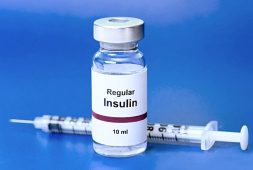
A novel non-invasive test may simplify the process for doctors in predicting successful pregnancies for women undergoing IVF, thereby enhancing the accuracy and outcomes of this procedure for couples grappling with infertility.
In-vitro fertilization (IVF), a method involving the fertilization of eggs in a laboratory followed by their implantation into their uterus, has offered hope to countless couples.
Nevertheless, IVF is intricate, with success rates among women under 40 in the United States ranging from 20 to 40 percent. The challenge lies in the difficulty for doctors to discern which IVF embryos hold the highest likelihood of leading to a successful pregnancy.
However, a groundbreaking non-invasive test for embryo quality, devised by researchers at the University of California San Diego, has emerged to tackle this issue.
Professor Irene Su of UC San Diego School of Medicine said, “Unfortunately, IVF success still involves a big element of chance, but that’s something we’re hoping our research can change.”
“IVF is challenging enough as it is, so it was extremely important to us that our research didn’t interfere with this already-delicate process. What we’ve done is more akin to looking at what’s left behind at an archaeological site to help us learn more about who lived there and what they did,” she added.
The innovative test functions by identifying tiny genetic material particles, known as exRNAs, left behind in the fluid in which young embryos are cultured.
In contrast to relying on embryo biopsies, this novel approach operates akin to blood tests by identifying exRNAs in a fluid sample. Consequently, this novel approach is entirely non-invasive and does not require additional steps for women undergoing IVF treatment.
Despite uncertainties regarding the biological role of exRNAs, their discovery in the early 2000s has paved the way for groundbreaking medical research, offering insights into intercellular communication and disease mechanisms.
There is considerable potential for their application in diagnostics and therapeutics.
Professor in the Department of Bioengineering at University of California, Sheng Zhong, said, “It’s really only in the last decade that we have started to uncover the uses for exRNAs, and there could be countless other applications we haven’t yet discovered.”
“This is just the beginning,” she said.
Nonetheless, the researchers caution that further research is necessary to validate whether their can directly predict positive IVF outcomes, such as successful births.
Professor Su said, “Once that work is done, we hope this will make the overall process of IVF simpler, more efficient, and ultimately less of an ordeal for the families seeking this treatment.”



